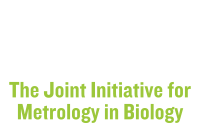Making the Measurements that Matter
Our vision is a world in which mastery of living matter is achieved by undergirding genome science and synthetic biology with the principles of metrology.
Stanford innovators and industry entrepreneurs have joined forces to create a new engine powering the bioeconomy. It’s called JIMB — “Jim Bee” — the Joint Initiative for Metrology in Biology.
JIMB was founded as a collaboration between NIST and Stanford, and we gratefully acknowledge past support by NIST. JIMB is now transitioning to a new model. Stay tuned for further developments!
What is Metrology & why is it important for biology?
Metrology, the science of measurement, comprises specific scientific and engineering concepts to support confidence in measurement results as well as interoperability of resources. For example, standards and benchmarks against which results are evaluated provide a common language for comparability regardless of how, when, and where an experiment was performed. Similarly, modularization of laboratory or computational workflows and clear definitions of input and output facilitate interoperability and continuous methodological improvement. These concepts are equally important for technology developers who need to provide robust evidence that a new approach is useful, and for discovery scientists who need to quantify confidence in their measurements for the results to be trusted by others.
Metrology has its origin in the physical sciences, where it has led to massive acceleration of technology development, discovery science, and engineering. At JIMB, the concept of metrology goes beyond the narrow definition based on measurement: The heterogeneous, interconnected, and dynamic nature of biology requires massively parallel data ("measure"), computation on that data ("model"), and engineering of living systems ("make") to master living matter like we have mastered many aspects of nonliving matter. Biology's complexity and the global nature of its pursuit by scientists and engineers demands coordination solutions that allow for the standardization and integration of data, transparent analysis, and reuse of physical and data resources. Metrology provides the framework for such coordination solutions.
HOW WE catalyze change
Building a community of trainees and staff who speak the same language of metrology regardless of scientific focus
Convening mission-driven workshops and consortia, to establish common frameworks for comparability and reuse of resources
Collaborations among stakeholders from .com, .edu., and .gov to work together on precompetitive and postcompetitive applications of metrology in biology
Realizing our vision
At JIMB we focus our efforts on bringing metrology to synthetic biology and genomics. We feel that accessibility, reliability, and interoperability in modern biology will benefit society. We aim to catalyze innovation by bringing together academia, industry and government. Our collaborative innovations are implemented and dispersed through education, toolmaking, and standards that benefit everyone.
